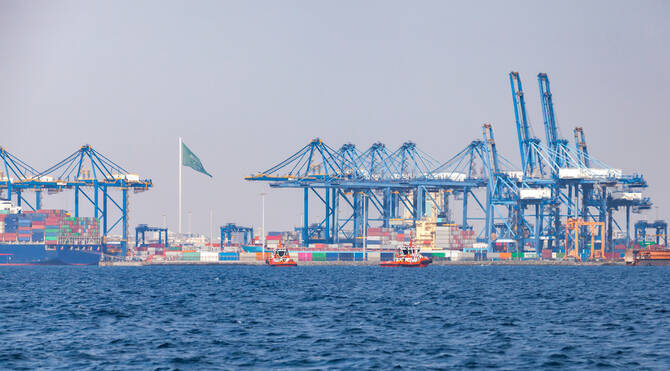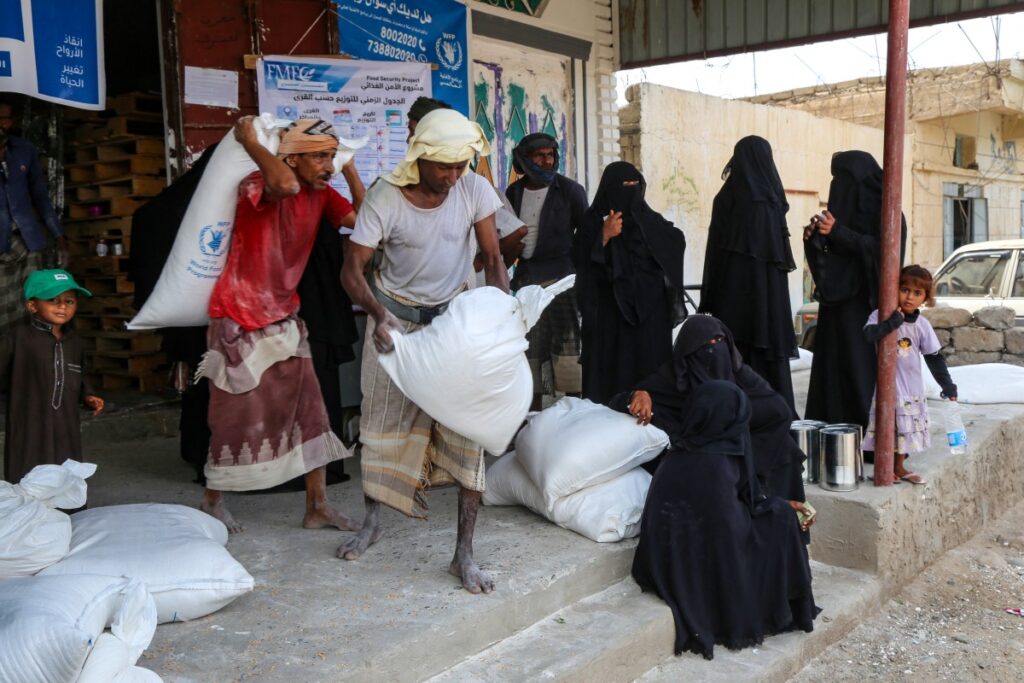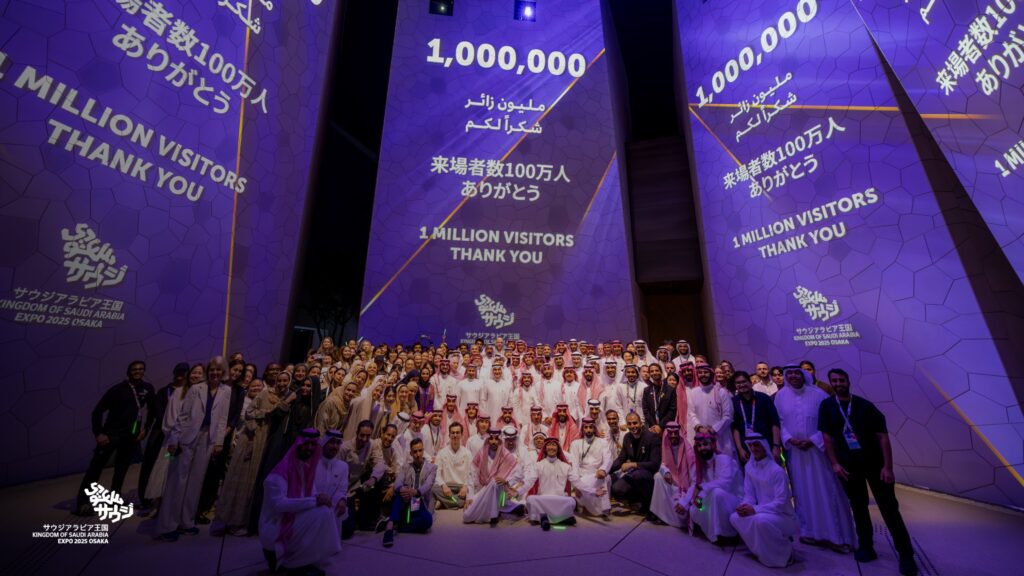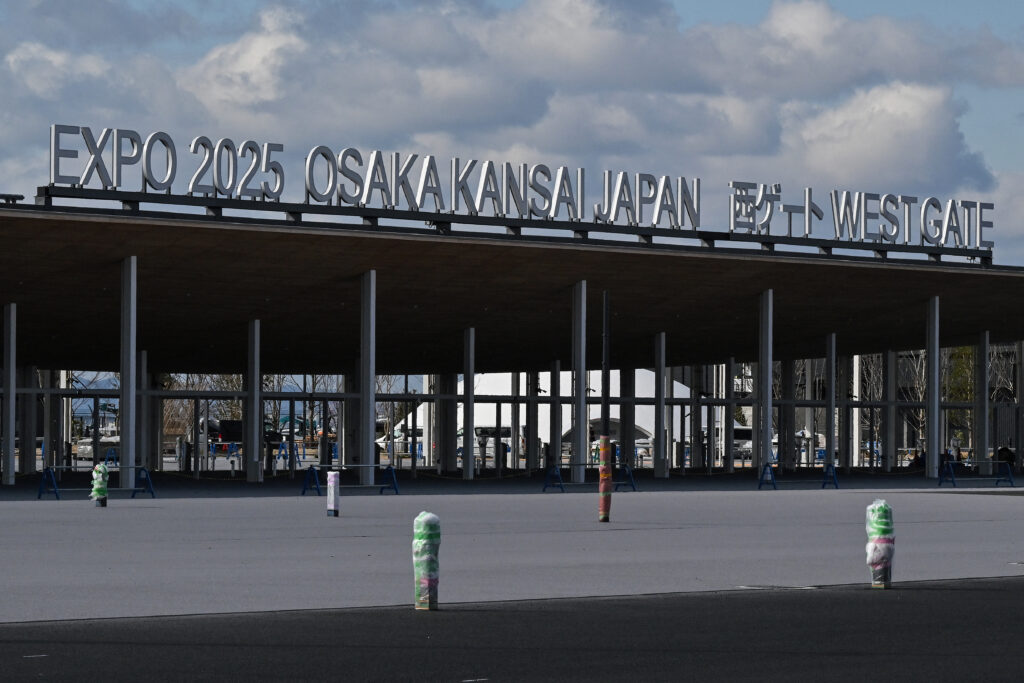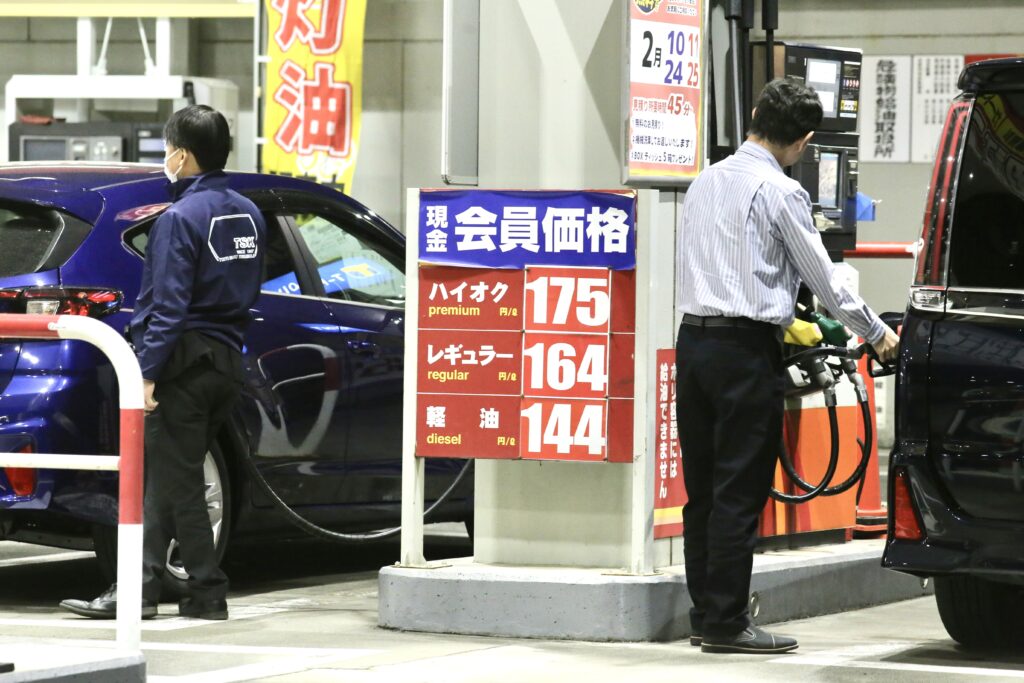RIYADH: Saudi Arabia’s non-oil exports rose 13.4 percent to SR80.72 billion ($21.52 billion) in the first quarter of 2025 compared to a year earlier, underscoring the Kingdom’s ongoing efforts to diversify its economy.
As for national non-oil exports which exclude re-exports, grew by 9 percent, while the value of re-exported goods surged 23.7 percent, according to preliminary data released by the General Authority for Statistics.
This growth aligns with Saudi Arabia’s Vision 2030 goal of developing a robust non-oil sector to transform the Kingdom’s economy and reduce its dependence on oil revenues.
“The ratio of non-oil exports (including re-exports) to imports increased to 36.2 percent in the first quarter of 2025 from 34.3 percent in the first quarter of 2024. This is attributed to the increase in non-oil exports compared to imports of 13.4 percent and 7.3 percent, respectively, during the same period,” GASTAT stated.
Affirming the momentum in the non-oil sector, a report released by S&P Global in collaboration with Riyad Bank noted that the Kingdom’s Purchasing Managers’ Index stood at 55.6 in April — well above the neutral 50 mark — indicating solid non-energy business growth.
GASTAT data showed that chemical products dominated non-oil exports in the first quarter, accounting for 23.8 percent of total outbound shipments, up 8.1 percent from the same period in 2024. Plastic and rubber products followed, representing 21.9 percent of non-oil exports.
In a broader economic context, Saudi Arabia’s gross domestic product grew 2.7 percent year on year in the first quarter, driven by strong non-oil activity, according to a separate GASTAT report released in May.
Commenting on the GDP figures, Minister of Economy and Planning Faisal Al-Ibrahim, who also chairs GASTAT’s board, said at that time that the contribution of non-oil activities to the Kingdom’s GDP reached 53.2 percent — an increase of 5.7 percent from previous estimates.
He added that the Kingdom’s economic outlook remains positive, supported by structural reforms and high-quality, state-led projects across various sectors.
Despite the rise in non-oil exports, total merchandise exports fell 3.2 percent year on year in the first quarter to SR285.78 billion, due to an 8.4 percent decline in oil exports. As a result, oil exports’ share of total exports dropped from 75.9 percent in the first quarter of 2024 to 71.8 percent in the first quarter of 2025.
China remained Saudi Arabia’s top trading partner during the quarter. Exports to China totaled SR44.91 billion, followed by India at SR28.04 billion and Japan at SR26.48 billion.
South Korea received goods worth SR25.03 billion from Saudi Arabia, followed by the UAE at SR24.85 billion, Egypt at SR10.19 billion, and the US at SR9.42 billion.
Saudi Arabia also exported goods worth SR8.64 billion to Poland, SR8.40 billion to Bahrain, and SR7.17 billion to Taiwan.
Imports in the first quarter stood at SR222.73 billion, reflecting a 7.3 percent year-on-year increase. However, the merchandise trade surplus fell 28 percent over the same period.
Electrical and machinery equipment made up 26.6 percent of total imports, while transport equipment accounted for 14.6 percent.
The report revealed that the Kingdom received goods worth SR59.33 billion from China, followed by the US at SR17.58 billion, India at SR12.27 billion, and the UAE at SR11.82 billion.
King Abdulaziz Sea Port in Dammam was the top entry point for imports, handling SR59.97 billion in goods, or 26.9 percent of total inbound shipments. Jeddah Islamic Sea Port followed with 21.5 percent, King Khalid International Airport in Riyadh with 13.5 percent, and King Abdulaziz International Airport with 8.4 percent.
Non-oil exports rise 10.7% in March
In a separate release covering data for the month of March, GASTAT reported that Saudi Arabia’s non-oil exports rose 10.7 percent year on year to SR27.03 billion.
Chemical products accounted for 25.7 percent of total outbound shipments, followed by plastic and rubber products with a 23.3 percent share.
“The ratio of non-oil exports (including re-exports) to imports increased to 36.5 percent in March 2025 from 33.0 percent in March 2024. This is attributed to the increase in non-oil exports compared to imports of 10.7 percent and 0.1 percent, respectively, during the same period,” the report noted.
However, total merchandise exports in March declined 9.8 percent year on year, driven by a 16.1 percent drop in oil exports. Consequently, oil exports as a share of total exports fell from 76.5 percent in March 2024 to 71.2 percent in March 2025.
In March, Saudi Arabia exported goods worth SR14.50 billion to China, while India received inbound shipments valued at SR8.78 billion.
The Kingdom also sent goods valued at SR8.19 billion to Japan, followed by the UAE at SR7.23 billion, South Korea at SR6.50 billion, and the US at SR3.36 billion.
Imports edged up 0.1 percent year on year in March to SR73.98 billion. The trade surplus, however, fell 32.4 percent compared to March 2024.
China remained the Kingdom’s top import source in March, shipping goods worth SR18.69 billion. It was followed by the US at SR5.76 billion, the UAE at SR4.36 billion, and India at SR3.60 billion.
Saudi Arabia also imported SR3.36 billion worth of goods from Japan and SR3.21 billion from Germany during the month.
King Abdulaziz Sea Port in Dammam remained the primary import hub, handling SR18.58 billion worth of goods in March — 25.1 percent of total imports. Jeddah Islamic Sea Port followed with 21.5 percent, King Khalid International Airport with 15.3 percent, and King Abdulaziz International Airport with 9.8 percent.



